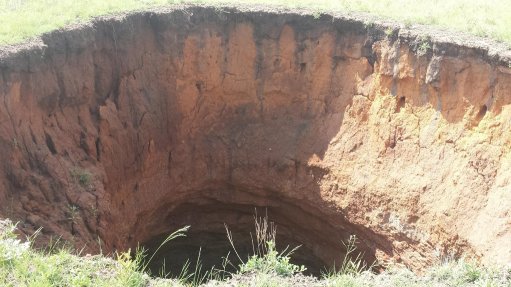
IN A HOLE With depressed metals prices, high levels of international political turmoil and a slowing Chinese economy, investors are understandably wary of the mining industry
For the global mining industry, 2015 was a challenging year and early indications suggest that 2016 is unlikely to reveal the light at the end of the tunnel for the sector, states professional services firm SNL Metals & Mining.
The firm notes that, with depressed metals prices, production exceeding demand for most metals, high levels of international political turmoil and a slowing Chinese economy, investors are understandably wary of the mining industry and, indeed, of markets in general.
SNL’s recently released ‘2016 World Exploration Trends’ report has a “moderately negative outlook” for investment in exploration and does not expect exploration budgets to begin rebounding before 2017.
The firm notes that, over the past three years, companies significantly restructured their operations and refined their strategies to better align with poor economic forecasts and to reassure their investors.
“Initially pushed to lower spending and increase profit margins, many majors have recently been forced to shrink their operations, including their exploration departments, to address balance sheet issues. “The inevitable result is a slowdown in organic growth, leading to greenfield projects being sold or placed on hold,” the report says.
SNL remarks that the prolonged period of poor financing opportunities for the majority of junior explorers has forced them to slash spending, renegotiate agreements or settle for unfavourable terms, go temporarily dormant or leave the industry altogether.
“When market sentiment eventually begins to improve, the recovery will likely be tentative, offering little promise of a quick restoration of the juniors’ fortunes.
We therefore project a further decline in junior explorers’ aggregate budget total for 2016.”
The firm adds that, although the majors are likely to continue with highly focused exploration programmes on “less risky” brownfields targets, some highly leveraged producers will continue curtailing exploration budgets in 2016.
“Given these forecast scenarios and the current general economic malaise, we project a net decrease of about 15% in corporate exploration budgets for 2016,” SNL posits.
The past year was a tough one for the seven major mined commodities, namely iron-ore, nickel, aluminium, zinc, copper, coal and gold.
Iron-ore and nickel prices were around 40% lower over the year; zinc, copper and coal fell more than 20%; aluminium was down over 17%; and even gold, which is traditionally viewed as a safe haven for investors, was down about 10%.
SNL nonetheless points out that the year ended on a positive note for most mined commodities, particularly iron-ore, which gained about 11% over the last ten trading days.
Iron-ore closed the year at about $43.6/t, compared with the December 11, 2015,
low of $38.3/t.
The exceptions in the last week were gold, down 0.7% at $1 060/oz (for a 2015 average of $1 161/oz), and aluminium which was down 1.8% at $1 513/t.
“The coal miners suffered more than most in 2015; the Dow Jones Coal Index, which comprises 235 companies, ended the year 79% lower than it started, with an aggregate market cap of $190.4-billion.
However, SNL highlights that, while mining saw one of its worst years in 2015, it was “a record year” for mergers and acquisitions (M&A).
Deals for the year exceeded $4.6-billion, surpassing the previous M&A peak of $4.3-billion in 2007.
The firm explains that analysts explained the surge as being driven by the “hunger” for growth, coupled with cheap funding.
“Commodity prices plummeted almost one-third overall in 2015
and eventually took credit markets down with them. “The falling prices also hit emerging markets, with the perplexing exception of Chinese equities, which were the best-performing of the major markets, but which generally underperformed developed market assets,” SNL states.